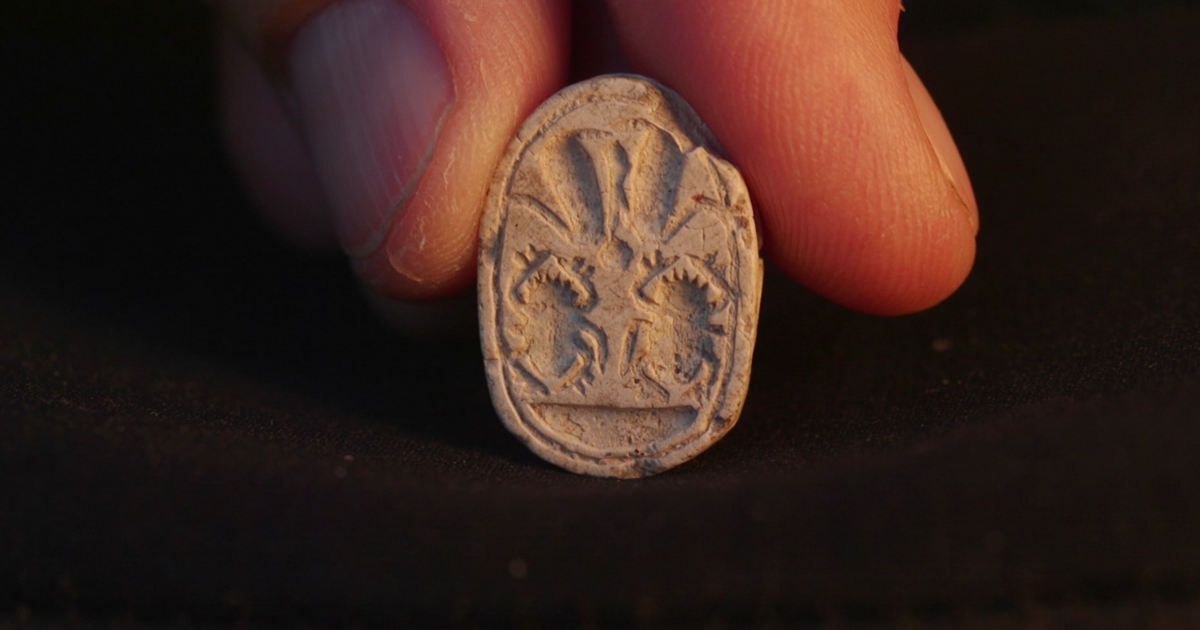The three-year-old could have picked up any other stone or sea shell on her family trip but instead, the toddler found an ancient amulet dating back to 3,800 years ago. On the family’s visit to the archaeological site and ancient town of Tel Azekah in Israel, Ziv Nitzan fell upon a stone believed to be a Canaanite scarab from the Middle Bronze Age. Egyptologist Dr Daphna Ben-Tor said it dates back to about 3,800 years ago when scarabs were used as seals and amulets could be seen in graves, public buildings and homes, often with symbols or messages that convey status or a religious belief.
The three-year-old’s sister, Omer Nitzan, said in a Facebook post by Israel’s Antiquities Authority on April 2: “When she rubbed it and removed the sand from it, we saw something was different about it. “I called my parents to come see the beautiful stone, and we realised we’d discovered an archaeological find! We immediately reported this to the Israel Antiquities Authority.”
Oded Lipschits, director of the Tel Aviv University archaeological dig, said: “The scarab found by Ziv joins a long list of Egyptian and Canaanite finds discovered here, which attest to the close ties and cultural influences between Canaan and Egypt during that period.”
Originating in Egypt, the scarab seals were in the shape of dung beetle who was considered sacred to ancient Egyptians and symbolising new life.
The Israel Antiquities Authority said in the Facebook post: “This beetle, considered sacred in the eyes of the ancient Egyptians, was a symbol of new life, because of the dung ball it created and then laid its eggs into it, from which new life would hatch.
“Its name in Egyptian derives from the verb “to come into being”, or “to be created”. This is because the Egyptians saw the scarab as a symbol of the incarnation of God the Creator.”

